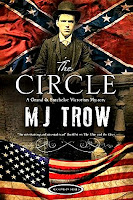First Sentence:
Among the dozens of restaurants spread out on the Ain Diab coast, Sofia’s
was the only one with an air of simple elegance, as if it reflected the
personality of its namesake.
Othman,
a handsome Moroccan man in his 20s, returns from walking the dog and meeting
with the woman he loves, to find his 73-year-old-wife brutally stabbed, but not
quite dead. Without thinking, he removes
the knife from her stomach, leaving his fingerprints and making him the prime
suspect. Times have changed since the
brutal 70’s and 80’s in Morocco, resulting in Detective Alwaar having to
question witnesses without torturing them, but bullying and pushing are
occasionally used. Only when Othman
contacts a former classmate, now attorney, Hulumi, does he have a chance.
Morocco
is a country about which most of us know very little, and most of what we do
know is probably wrong. It is wonderful,
therefore, to have Hamdouchi—one of the first writers of Arabic-language
detective fiction—introduce us to his home.
Still, one wishes for a much stronger, more evocative sense of
place.
Stronger
character development would also have been appreciated. One finds oneself wanting to know much more about
the detective, Alwaar, and his referenced but never met wife. Othman and Naema grew as characters through
the story leaving us with a nice questioning of their innocence. However,
it is with the introduction of Hulumi the attorney, where the story really
takes off and becomes a real investigative mystery. His character is also the one who teaches us
about Moroccan law and how it needed to change, which was fascinating-- "I want to investigate this case like a
cop," continued Hulumi. "If I can prove Othman's innocent, I'll have
enough evidence to show the law has to be changed so a lawyer can be present
when the judicial police question a suspect. I can do that by writing a series
of articles about this in the press. Democracy in Morocco has to begin from the
police stations.”
In
contrast, Alwaar is a cop of the past who is finding it hard to deal with the
changes in investigation—“His work became confusing; it
was hard for him to get confessions without slapping or kicking a suspect, or
sending him down to the torture room in the basement of the police station
before interrogation. Alwaar didn't know how to do his job without brutality.
He just couldn't get used to sitting in front of a suspect without being
aggressive or insulting.”
The
translation is a bit clunky at times, and the final confession too staged, but
those were relative small issues.
“The Final Bet” is quite a good procedural and an engrossing read, partly due to its
Moroccan setting. It is also one of
those books were the afterword, written by the translator Jonathan Smolin,
should not be overlooked.
THE FINAL
BET (Myst-Othman-Morocco-Contemp) – G+
Hamdouchi, Abdelilah – 1st book
The
American University in Cairo Press – May 2008















